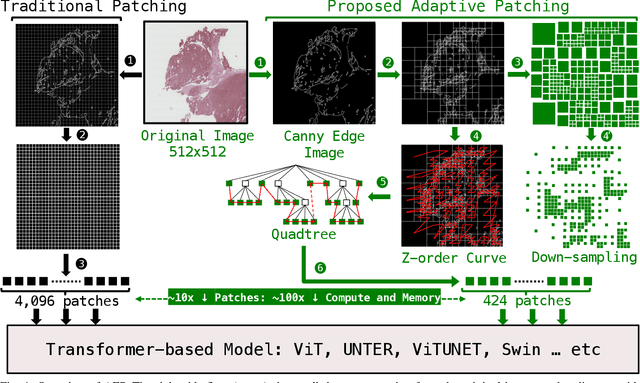Adaptive Patching for High-resolution Image Segmentation with Transformers
Paper and Code
Apr 15, 2024



Attention-based models are proliferating in the space of image analytics, including segmentation. The standard method of feeding images to transformer encoders is to divide the images into patches and then feed the patches to the model as a linear sequence of tokens. For high-resolution images, e.g. microscopic pathology images, the quadratic compute and memory cost prohibits the use of an attention-based model, if we are to use smaller patch sizes that are favorable in segmentation. The solution is to either use custom complex multi-resolution models or approximate attention schemes. We take inspiration from Adapative Mesh Refinement (AMR) methods in HPC by adaptively patching the images, as a pre-processing step, based on the image details to reduce the number of patches being fed to the model, by orders of magnitude. This method has a negligible overhead, and works seamlessly with any attention-based model, i.e. it is a pre-processing step that can be adopted by any attention-based model without friction. We demonstrate superior segmentation quality over SoTA segmentation models for real-world pathology datasets while gaining a geomean speedup of $6.9\times$ for resolutions up to $64K^2$, on up to $2,048$ GPUs.
 Add to Chrome
Add to Chrome Add to Firefox
Add to Firefox Add to Edge
Add to Edge